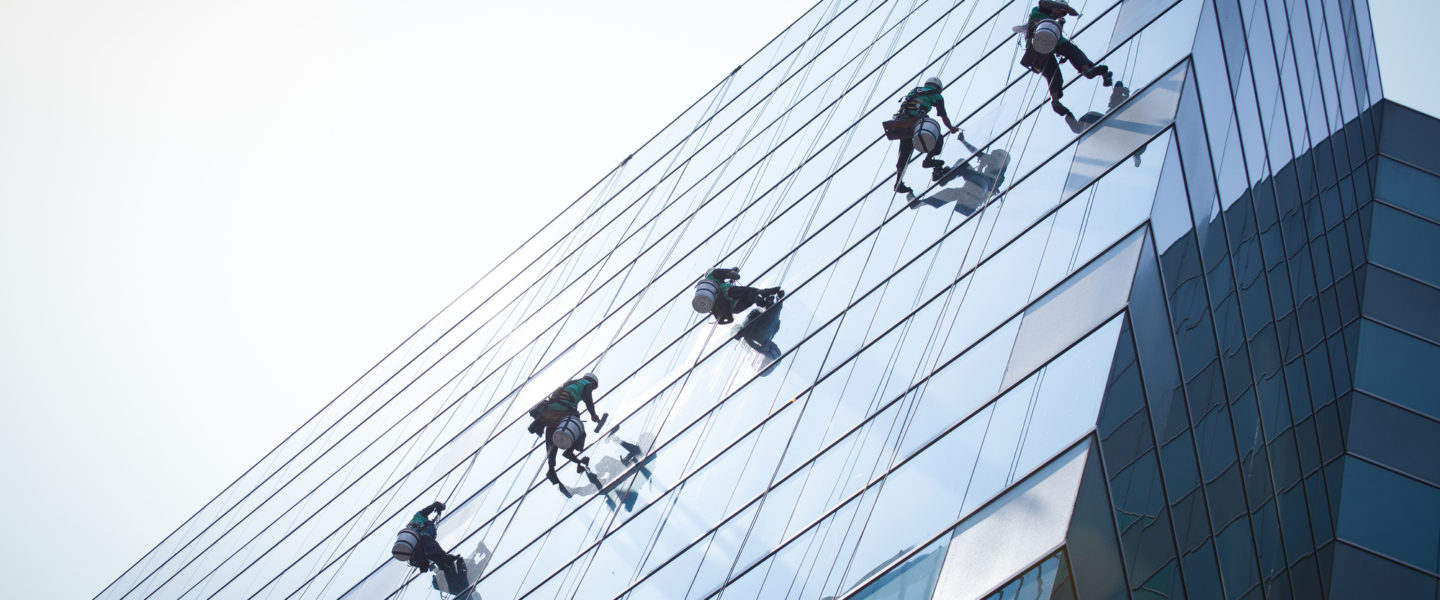Cleaning projects are, without a doubt, some of the most interesting pieces of work we undertake. It’s a seriously under-valued profession but unquestionably an extremely important component of everyone’s business.
Sadly it is taken for granted. It is as if a magic wand is waved during the twilight hours and everything in the office, factory, venue, restaurant, school, hospital or absolutely anywhere is transformed.
As we know, first impressions are extremely important to guests, staff and occupants. Many judge an organisation by how their space is presented, how clean the toilets are, whether there are smears on the windows, whether there’s build up of grime in the corners of the room and many more.
Typical comments you often hear are: ‘Because the place is so dirty it as if they really don’t care!’, ‘Do we want to eat there?’, ‘If they have no pride in their appearance, what are they like as a company?’ With that kind of feedback, any chef, for instance, isn’t going get a chance to show off their culinary skills as they will have lost the chance to impress already. Just think how you react to a zero or low food rating.
At all-inclusive resort hotels where we have conducted surveys the second most important element after the beach and watersports was room cleanliness. Surprisingly food is further down the list.
In hospitals, cleanliness and hygiene is a lifesaver and features highly in patient surveys. In fact it’s a major factor for everyone. Well, at least until you get to some of the decision makers.
In fact, it got so bad in the NHS a few years ago they had to rewrite the specifications, fund enforced deep cleans, and ensure that costs weren’t cut further at the expense of patient care. Remember MRSA?
Good cleaning means longer asset life, less redecoration, happier customers with a better sense of well-being. Despite its image cleaning is not all mops and buckets, toilet brushes and minimum wage staff. It’s a world of innovation, motivation and influence.
By risk rating your spaces and working out how much input you actually need before you go out to bid (or do yourself), you can determine how much you can actually afford. One of our favourite cleaning projects was at a major entertainment centre in London. This venue only closes for five days a year, the rest of the time it not only has a range of events in the auditorium but also in many of the side rooms and has multiple turnarounds a day.
When we started, the venue was spending a seven-figure sum with two-thirds provided in-house at well-above the market rate but low productivity; the rest by a contractor who ended up with less popular jobs. There was a ‘Maginot Line’ between the male and female toilets, in-house cleaned one, the contractor cleaned the other.
Everyone agreed that change was required but certain stakeholders were nervous about that situation. So we completely mapped the space to identify room usage, dimensions, types of surfaces, access & utilisation which gave us a true cleanable area.
The benchmark cost to clean all areas to the right standard ended up at two thirds of the existing budget. This convinced the CEO and stakeholders that it was the right time to market test after the initial reluctance.
The outcome was that five bidders were shortlisted but very quickly two were excluded for being poorly priced (too high or too low). Of the three shortlisted, the winning bid was virtually on the benchmark and with the right quality ethos – so this company was rightly appointed and then proceeded to transform cleaning. Quality improved by 20% points, the auditorium was cleaned straight after performances (not the next day) and costs reduced. Job done.
We do this for everyone be they insurance firms, hospitals, schools, universities, visitor attractions and sports stadia. It’s fascinating how initially ambivalent clients are about cleaning then they get really engaged in the process once they realise they can make a difference.
Cleaning companies just then need to bid sensibly so they can spend more time on bringing innovation such as robotic scrubbing machines, video displays on hand dryers, flow cleaning, environmentally friendly cleaning materials and so on.
This ‘intelligent’ operator invests savings (usually 10-15%) back into staff pay, terms & conditions adopting the Living Wage (the Living Wage Foundation rate). In reality, over 80% of cleaning is a ‘people cost’ and if you look after them properly they will become more engaged & motivated. In fact, many of the innovations come from the staff as they come up with new ways of doing things and better firms reward or award staff.
So the advice would be that we shouldn’t relegate cleaners to silent ‘passing ships in the night’ – they are singly the most important people in a hotel, hospital, restaurant, office or absolutely anywhere. They support brands, values and help show that organisations care about guests, staff and anybody they deal with.

